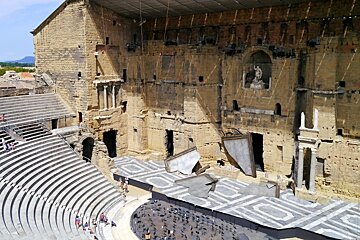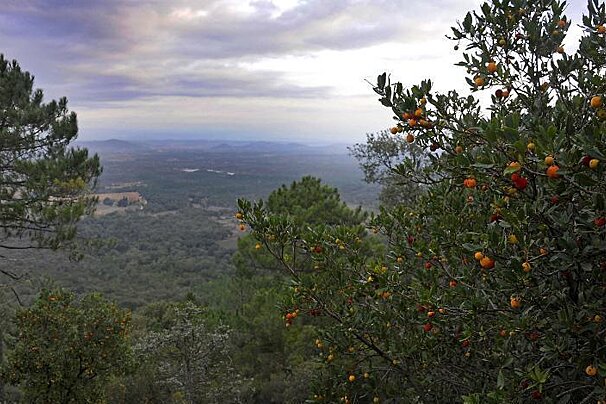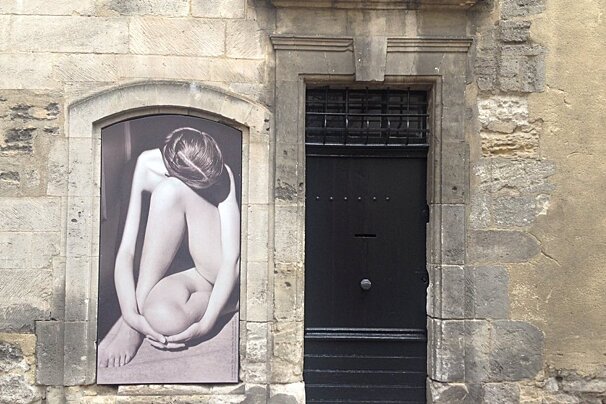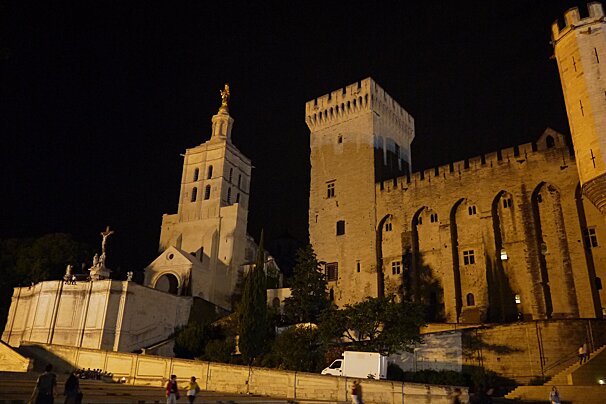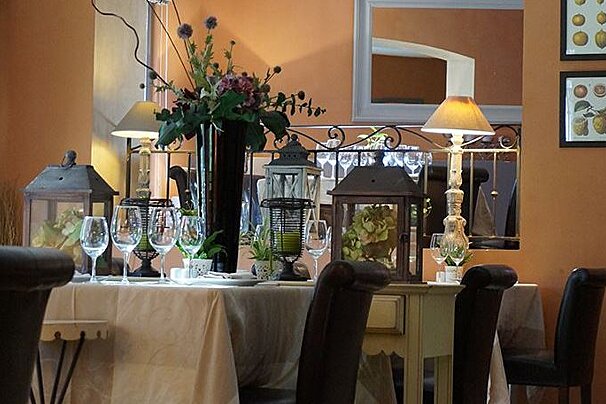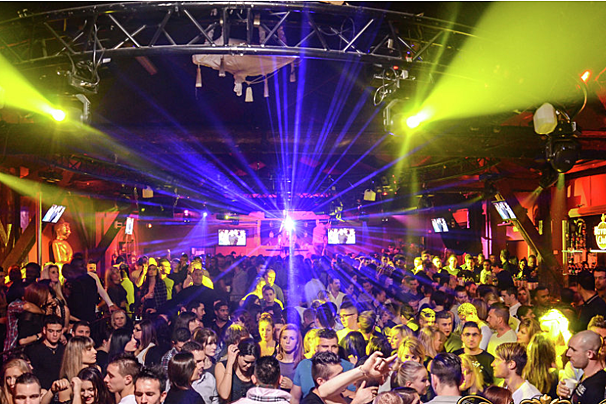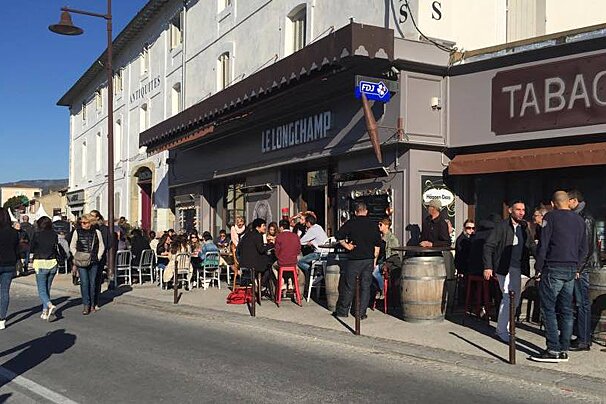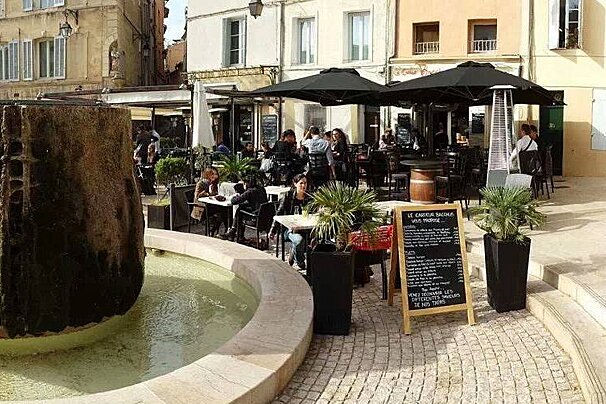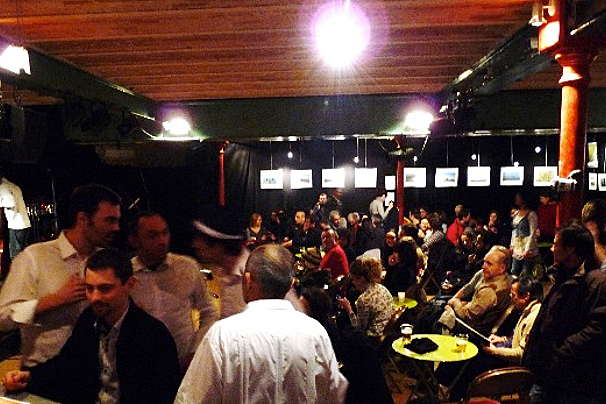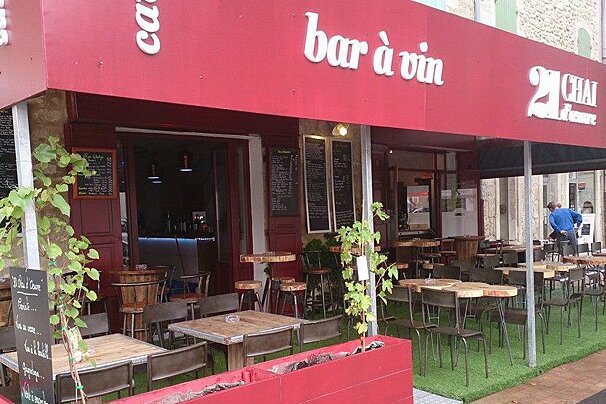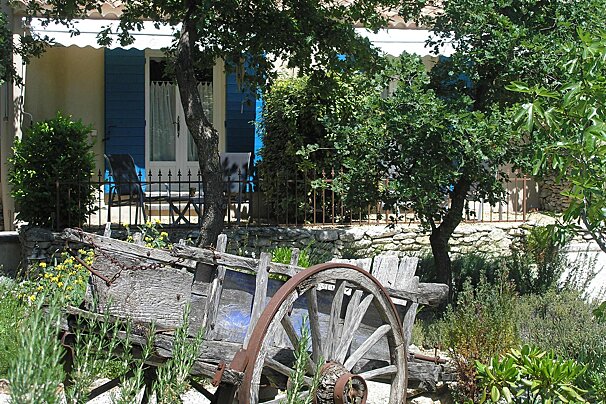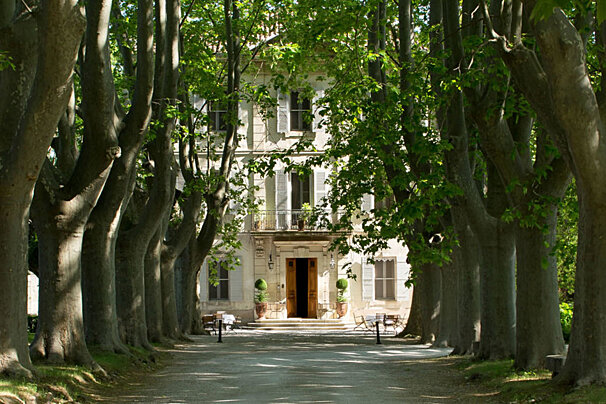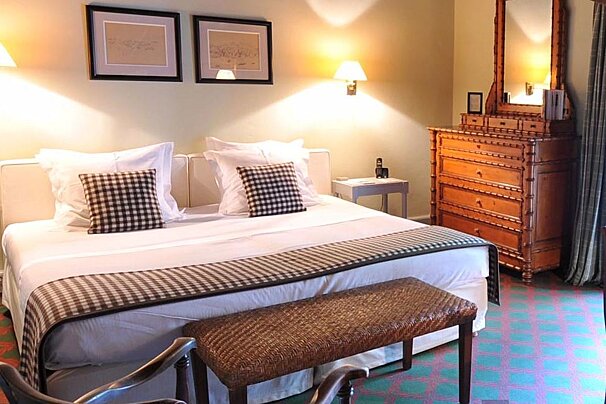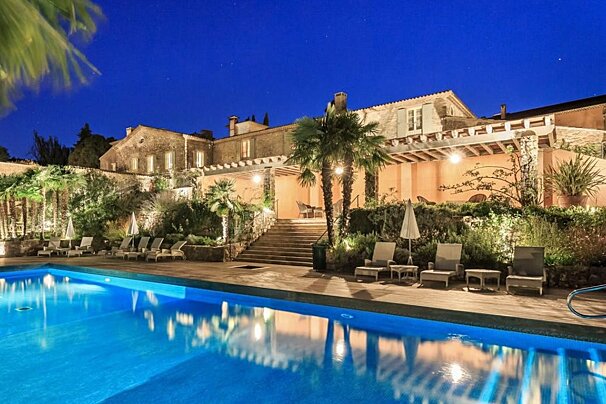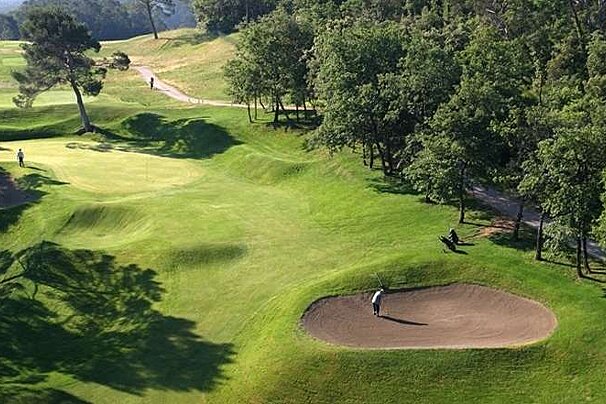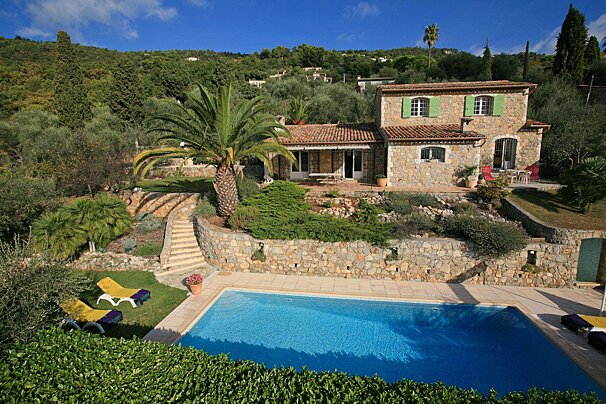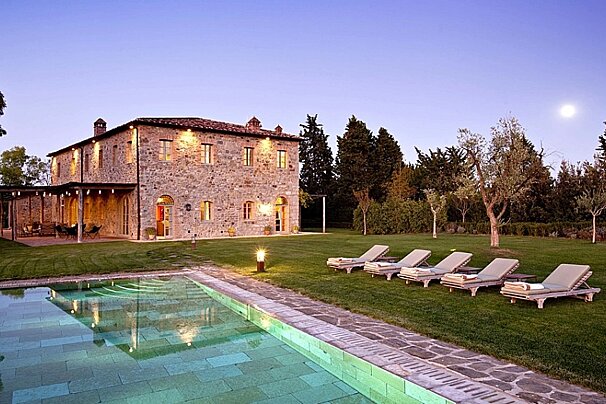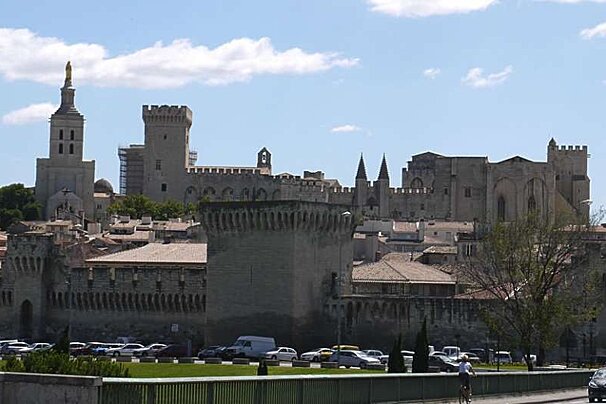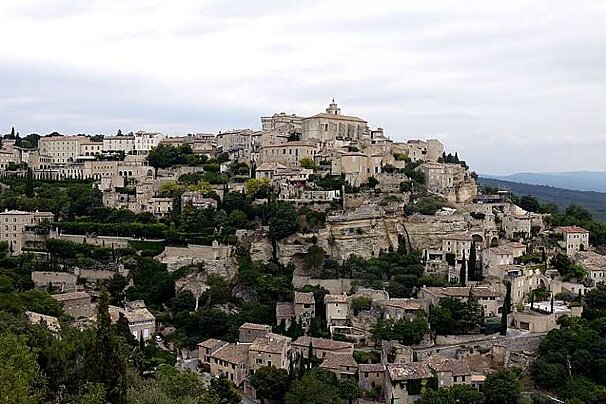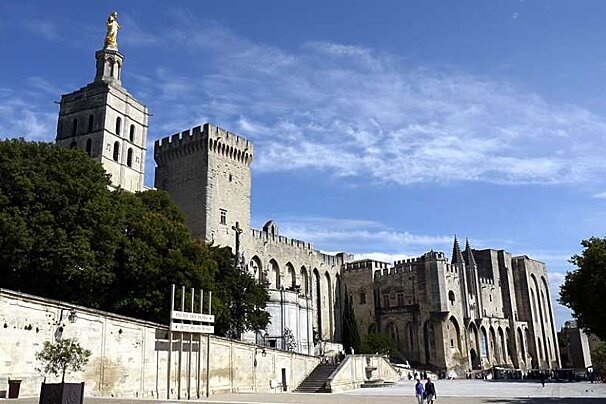Orange
Home to some of the world's best Roman ruins
Driving from Lyon south on the Autoroute A7 towards Provence, you may notice the signs for Orange, the first major town in the region.
What attracts the thousands of visitors to Orange are the two monumental Roman structures, the Arc de Triomphe and the Théatre Antique, both of such stature that a turn off the Autoroute will not disappoint. And if you're a Dutch national and a fan of the Royal Family (the House of Orange), a trip here will certainly be on your list.
History & Culture in [locality]
A prosperous town under the Roman emperor Augustus, in the 5th century it was pillaged by the Visigoths, becoming an independent county in the 11th century, later passing to the house of Nassau.
In 1660 it was captured by the French King Louis XIV, who had its fortifications pulled down, and it was eventually ceded to France in 1713.
Famous for its Roman architecture, the theatre was built around 27BC - 14AD and is the best preserved of its kind. Originally seating around 1,100 people, an imposing statue of Augustus stands about 3.7m tall in the wall's central niche.
There is also a famous arch, one of the largest built by the Romans at about 19m high, it has fine sculptures of victories of Roman general and statesman Julius Caesar. The theatre, the arch and its surroundings were designated a UNESCO World Heritage site in 1981.
Modern day Orange is an agricultural processing centre, tourism and glass manufacturing are also important.
Sights & Attractions in [locality]
The most impressive approach to Orange from the north is by way of the N7, which leads directly to the Triumphal Arch on the north side of town (parking nearby). Most historians think that this ornate Roman arch, one of largest and best preserved, was dedicated to Tiberius or is it Julius Caesar, commemorating the military exploits of his legions, some 20 years BC. A few others doubt the attribute. But what is clear is that this arch tells a story. On the facades you can see the chiselled decorations that tell of Gallic slaves captured, with hands tied behind their backs, of military attributes - helmets, flags, javelins - of naval elements - anchors, ropes, tridents - of battles between the Romans and the Gauls. The arch tells you that the legions of Tiberius, or another emperor, were here and don't you forget it. The crowning glory on top, a chariot drawn by four horses, is now sadly missing.
Just south of the old town and close to the tourist office you'll find the Roman theatre, the best preserved theatre of the Roman Empire. Built during the reign of Augustus, it still serves today as a place to enjoy concerts, opera or ballet. Although it has suffered through the ages from natural decay, fires and looters keen on finding building materials for their own architectural designs, the theatre gives a sense of how the productions in Roman times might have been. It seems, however, that the earlier audiences enjoyed better acoustics (with clever awnings stretched over the seating area) and a more ornate backdrop with statues of Roman dignitaries.
Now we are only treated to a statue of Augustus in a niche, assembled from the rubble 1,500 years after a fire destroyed the backdrop in the 4th century. It's not even certain whether the head is that of Augustus, but he looks impressive enough with his Roman salute. Whether the earlier audiences enjoyed more comfortable seating is entirely doubtful.
A private cushion is the first requirement for an enjoyable evening in the theatre. And when the Mistral strikes, you may well want to bring a sweater, blanket, parka, gloves and other warming devices. A hilarious account of an Aida performance during a Mistral can be read in Yvone Lenard's The Magic of Provence. The chapter is appropriately called "A Song in the Wind." During the performance the strong wind picks up and the Spanish diva Victoria de Los Angeles "holds onto her wig with one hand and attempts to control the ballooning skirt with the other while keeping a precarious balance, in great danger of being toppled by the merciless gusts".
For the Dutch, a walk up to the Eutrope hill, which overlooks the village is a must. There they find the dismal remains of a castle that Prince Maurits built in 1622, using the remains of Roman structures as his building blocks. Fortunately he left the theatre, to a degree, in tact. In the 16th century the principality of Orange was passed on to William the Silent, Stadtholder of the Dutch Provinces. For the next hundred years or so the ownership of the territory was much in dispute, torn this way and that by the religious wars between Catholics and Protestants, with the French King being more than annoyed about this Dutch enclave in his territory. Finally, in 1713, the decree of Utrecht decided that Orange was to be part of France, but that the descendants of William the Silent could still call themselves prince or princess of Orange, without land. To this day the primary title of the Queen is Princess of Orange. And when you see a soccer match of the Dutch national team and wonder about all those orange colours, now you know why.
After the visit to the Roman theatre, the Arch and the remains of the considerably smaller Dutch empire, you may wander about the old town. There are agreeable squares with restaurants that offer decently priced and good meals. Orange is worth a half or full-day stay. But be sure to bring your winter clothes when you attend a performance at the theatre.
Sights in Provence
See all Sights & Sites-

Plaine des Maures Natural Park, La Garde Freinet
La Plaine des Maures is the first natural park in the Var department, to the north west of Saint Tropez. It is renowned for it's umbrella pines and cork oak trees, and is rich in fauna and flora.
-

Site Memorial des Milles
At the beginning of World War II, France interned all Austrian and German nationals who were living in France at the time, and Les Milles was the prison for the south eastern region.
-

Fondation Van Gogh
Vincent Van Gogh moved to Arles in 1888, as so in hommage to the great master, the Fondation Van Gogh has collected works by contemporary artists that are in the style of Van Gogh.
-

Musee Reattu
The Musee Reattu presents collections of ancient and contemporary paintings, sculptures, tapestry, photography and sounds. Amongst these is a collection of some fifty seven drawings by Picasso.
-

Musee Departemental de l'Arles Antiques
Immerse yourself in the history of Provence by visiting this collection of archaeological remains.
-

Musee Nationale de Fernand Leger, near Biot
A few months before his death in 1955, artist Fernand Léger acquired a farmhouse at the foot of the village of Biot. It was here that his widow Nadia Leger, decided to create a museum to honour him and showcase his life's work.
Events in [locality]
There are plenty of events going on in Orange throughout the year. One of the oldest and most well known has to be the Choregies d'Orange, an annual International classic music festival set in the Roman theatre.
Events in Provence
See all Events Calendar-

Liszt en Provence festival, Uchaux
Uchaux is the venue for this series of summer concerts that celebrates the music of Liszt. Set in the fabulous grounds of Chateau Saint Esteve, the venue could not be more magical or romantic.
-

Arelate Festival
Relive the Roman days in Arles during the Arelate Festival, with daily shows that will transport you back into the days of gladiator battles and horse races.
-

a-part Festival, Les Alpilles region
'a-part' re-invents nature and surrounding landscapes with contemporary art that invigorates your senses, promoting new artists alongside established names.
-

Anniversary of the liberation of Avignon
As part of the Commemoration of the liberation of Avignon, a day of festivities honouring this historical event takes place.
-

Reves de Camargue Horse Show
Come and watch this memorable horse show with dancing horses and cowboys at the Mas des Jasses de la Ville/Manade Fernay.
-

Markets in Provence
Read our Provence markets page to find out which market to visit when in Provence. From the vibrant array of local produce to the delightful scent of freshly baked delicacies, visiting a Provencal market is an absolute must for anyone exploring the charms of Provence.
Dining in [locality]
You'll find a great selection of restaurants, cafés and delis in Orange. Some feature in the Michelin guide, but if you're not looking for fine dining you'll find plenty of choice to suits your tastes and budget.
Restaurants in Provence
See all Restaurants-

L'Epice & Love Restaurant
This is a popular place with both locals and travellers. It has a small cosy interior so if you want to dine there, best to get there earlier rather than later.
-

L'Autruche Restaurant
Small restaurant where you will never eat the same thing twice. Their menu is solely based on what good fresh ingredients the local market has to offer in the mornings.
-

La Vache a Carreaux Restaurant
This small restaurant is on the Rue Peyrollerie, a winding alley just off the Place St Pierre. It is a great option for vegetarians, offering a wide variety of cheese dishes and salads but there are also fish dishes available.
-

Cote Sud Restaurant, Uchaux
The Cote Sud has a charming sophisticated interior and includes a lovely terrace where you can enjoy your food when the weather is warm enough.
-

La Cour d'Honneur Restaurant
Located right in the centre of Avignon on a well known shopping street is La Cour d'Honneur.
-

Les Chenes Verts Restaurant, Tourtour
This Michelin starred restaurant is situated on the outskirts of Tourtour and specialise in truffle dishes.
Nightlife in [locality]
You can take in a show at the Roman theatre as well as the Theatre du Sablier in the centre of Orange. If you're just looking for a place to drink, there are plenty of bars and cafés to choose from.
Bars & Clubs in Provence
See all Bars & Clubs-

Bokao's Nighclub
With a varied musical line-up, Bokao's combines good fun and great music.
-

Mistral Nighclub
The Mistral is Aix-en-Provence's answer to those looking for a trendy night out listening to the latest DJ's.
-

Le Longchamp Bar & Brasserie, Isle sur la Sorgue
This place is a bar, restaurant and tabac all rolled into one, on the side of the river in the centre of Isle de la Sorgue.
-

Le Cardeur Bacchus Bar
This small bar has a nice seating area outside next to one of Aix's many fountains and it catches the sun late into the evening.
-

Ajmi Jazz Club
The Ajmi has played host to numerous talented international Jazz artists, and the Ajmi is classed as one of the top 3 jazz venues in France and is located in the heart of Avignon next to the beautiful Palais des Papes.
-

21 Chai d'Oeuvre Bar, Saint Remy de Provence
This bar is located in the centre of Saint Remy de Provence. It has a good selection of wines by the glass, as well as bottles and champagne. They even serve charcuterie and cheese plates.
Hotels in [locality]
There are a good selection of hotels in and around Orange, as well as a lot of charming B&B's and apartments for rent.
Hotels in Provence
See all Hotels-

Le Clos des Lavandes B&B
23 August 20257 NightsIn the heart of the Luberon National Park, a beautiful and charming B&B welcomes you for a relaxing stay.
Price: €1,243
-

La Coquillade Hotel, Gargas nr Roussillon
This is a small luxury hotel offering 28 rooms in the wonderful countryside of the Luberon, with its own vineyard.
-

Le Chateau des Alpilles Hotel, St Remy
This charming chateau provides a wide range of accommodation from rooms and suites to mini apartments. Renowned for its beauty and excellent service, this is a very popular destination in Provence.
-

Le Mas de Peint Hotel
23 August 20257 NightsThis 17th-century home has been inhabited by several generations of the BON family, ranchers (“manadiers”) from one generation to the next.
Price: €2,380
-

Villa Gallici Hotel
23 August 20257 NightsUnder the light Cézanne once knew, the Villa Gallici Hotel is an 18th century Provençal house and a member of Relais et Châteaux portfolio.
Price: €5,640
-

Chateau de Berne Hotel
23 August 20257 NightsSet deep in the lush Var region of Provence, this country house hotel is set within a 550 hectare vineyard. So if food and wine are high on your agenda, then you may well want to consider a stay in the this charming Provencal hotel.
Price: €29,568
